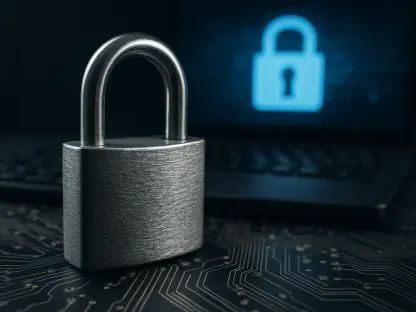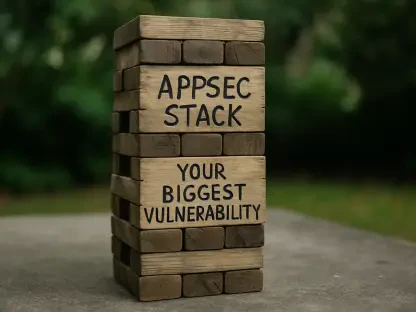In an era where corporate communication hinges on digital platforms, Slack stands as a linchpin for millions of users worldwide, facilitating seamless collaboration across industries. Yet, with over 10 million daily active users sharing sensitive data through its channels, a staggering reality emerges: a single breach can expose vast troves of confidential information, potentially derailing businesses overnight. This review delves into the critical security vulnerabilities plaguing Slack, dissecting real-world incidents and exploring the broader implications for organizations that rely on this ubiquitous tool. The analysis aims to uncover the risks, evaluate current safeguards, and ponder the path toward a more secure future for digital workspaces.
Introduction to Slack and Its Security Landscape
Slack has redefined workplace communication with its intuitive features, including organized channels for team discussions, direct messaging for quick exchanges, and seamless integrations with tools like Google Drive and Trello. These capabilities enable real-time collaboration, making it a staple in corporate settings ranging from startups to multinational enterprises. Its ability to centralize workflows has positioned Slack as an indispensable asset, particularly in remote and hybrid work environments where efficiency is paramount.
However, this widespread adoption comes with a heightened responsibility to protect the sensitive data traversing its platform, from financial reports to client details. As businesses increasingly depend on Slack for critical operations, the stakes for securing these interactions have never been higher. A breach in this ecosystem can lead to devastating consequences, including loss of trust and significant financial repercussions.
The cybersecurity landscape targeting Slack continues to evolve, with attackers employing sophisticated tactics to exploit its vast user base. From phishing schemes to malware infections, threats are becoming more insidious, capitalizing on the platform’s role as a repository of valuable information. As Slack’s popularity grows, so does the urgency to address these emerging dangers and fortify its defenses against an ever-shifting array of cyber risks.
Key Vulnerabilities in Slack’s Ecosystem
Credential Theft and Unauthorized Access
One of the most pressing threats to Slack’s security is credential theft, often orchestrated through phishing campaigns or malware deployed on personal devices. Attackers trick users into revealing login details or infect systems to harvest authentication data, granting unauthorized access to accounts. Such breaches can compromise not just individual users but entire organizational networks, given Slack’s interconnected structure.
The ripple effect of a single compromised account can be catastrophic, as attackers gain entry to channels containing proprietary data or strategic discussions. Real-world incidents have shown how quickly a breach escalates, with stolen credentials providing a gateway to broader data exposure. This vulnerability underscores the need for robust authentication mechanisms to thwart these initial access points.
Insufficient Endpoint Security
Endpoint vulnerabilities represent another critical weak spot in Slack’s ecosystem, particularly with the proliferation of personal devices used for work. Many employees access Slack from laptops or smartphones lacking adequate security measures, such as up-to-date antivirus software or encryption protocols. These unprotected endpoints serve as easy entry points for cybercriminals seeking to infiltrate corporate environments.
Once inside, attackers can navigate through Slack’s interconnected channels, exploiting the lack of stringent controls on user devices. This issue is compounded in remote work scenarios where IT oversight is often limited, leaving gaps in monitoring and response capabilities. Addressing endpoint security is vital to prevent these breaches from spiraling into larger threats.
Data Exposure in Chat Histories
Slack’s chat histories, while invaluable for maintaining conversation continuity, pose a significant risk of data exposure if not properly secured. Sensitive information, including trade secrets, personal identifiers, and business strategies, often lingers in these logs, accessible to anyone with account access. Without strict controls, this data becomes a goldmine for malicious actors.
The challenge lies in managing and monitoring the vast amount of information shared across channels, especially in large organizations with numerous users. Even encrypted messages can be vulnerable if endpoints or accounts are compromised, highlighting the difficulty of safeguarding historical data. This persistent threat demands innovative solutions to limit access and protect archived communications.
Notable Case Study: Nikkei Inc. Slack Breach
In September of this year, Nikkei Inc., a leading Japanese media conglomerate, suffered a massive breach involving over 17,000 compromised Slack accounts. The incident originated from a virus on an employee’s personal computer, which enabled attackers to steal authentication credentials and gain unauthorized access. This breach exposed critical data, including names, email addresses, and chat histories of both employees and business partners.
The impact of this incident was profound, affecting 17,368 individuals and raising concerns about the potential leakage of sensitive business information. Nikkei’s swift response, including password resets and public disclosure, aimed to mitigate damage, yet the scale of the breach revealed the fragility of relying on individual endpoint security. This event serves as a stark reminder of how a single point of failure can jeopardize an entire organization.
Contextualizing this breach within Nikkei’s history of cyberattacks amplifies its significance, as the company has faced prior incidents like a business email compromise in 2019 and a ransomware attack in 2022. These recurring threats indicate systemic challenges in fortifying their digital infrastructure against diverse cyber risks. Nikkei’s experience underscores the urgent need for comprehensive security strategies tailored to communication platforms.
Real-World Implications of Slack Vulnerabilities
Slack breaches reverberate across various sectors, particularly in industries like media, finance, and technology, where sensitive data is a cornerstone of operations. A breach in these fields can lead to the loss of intellectual property, as proprietary strategies or client information become exposed to competitors or malicious entities. Such incidents erode competitive advantages and disrupt business continuity.
Beyond data loss, the reputational damage from Slack vulnerabilities can be severe, undermining trust among stakeholders and clients. Financial losses also mount, stemming from legal penalties, remediation costs, and diminished market confidence. Companies in regulated sectors face additional scrutiny, as breaches often trigger compliance violations with data protection laws.
Examples beyond Nikkei illustrate the pervasive nature of these risks, with tech firms and financial institutions reporting unauthorized access to Slack channels leading to significant operational setbacks. These cases highlight a pattern of exploitation targeting collaboration tools, where attackers capitalize on the wealth of information exchanged daily. The broader industry impact signals an imperative for heightened vigilance and stronger protective measures.
Challenges in Securing Slack Environments
Securing Slack environments presents formidable technical hurdles, particularly in enforcing robust authentication across diverse user bases. Implementing multi-factor authentication and monitoring endpoint security are complex tasks, especially for organizations with limited resources or geographically dispersed teams. These challenges create persistent gaps that attackers readily exploit.
Regulatory obstacles further complicate the landscape, as compliance with data protection laws varies across regions and often involves intricate reporting requirements for breaches. Navigating these legal frameworks, especially when third parties are affected, adds layers of difficulty to incident response. Organizations must balance operational needs with stringent regulatory demands to avoid penalties and maintain trust.
Despite ongoing efforts by Slack and businesses to bolster security through user training and advanced features like encryption, significant gaps remain. Many mitigation strategies struggle to keep pace with evolving threats, leaving room for breaches through unaddressed vulnerabilities. A more integrated approach, combining technology and policy, is essential to close these loopholes and safeguard digital communications.
Future Outlook for Slack Security
Looking ahead, Slack’s security could benefit from cutting-edge advancements such as AI-driven threat detection to identify and neutralize risks in real time. Enhanced encryption protocols for both active communications and stored data might also fortify defenses against unauthorized access. These innovations could position Slack as a leader in secure collaboration if implemented effectively.
User education and corporate policies will play a pivotal role in preventing future incidents, ensuring employees recognize phishing attempts and adhere to security best practices. Organizations must prioritize regular training and clear guidelines to minimize human error, which often serves as the initial breach point. A culture of cybersecurity awareness can significantly reduce risks.
The long-term impact of recurring vulnerabilities may influence Slack’s adoption rates and shape the competitive landscape of corporate communication tools. If unaddressed, persistent security concerns could drive users toward alternatives with stronger safeguards. However, proactive enhancements and industry collaboration could cement Slack’s role as a trusted platform for years to come, starting from this year through to 2027 and beyond.
Conclusion and Key Takeaways
Reflecting on the exploration of Slack’s security landscape, it becomes evident that vulnerabilities like credential theft, endpoint weaknesses, and data exposure pose substantial risks to organizations. The detailed analysis of incidents, including the significant breach at Nikkei Inc., highlights the real-world consequences of these flaws, from financial losses to reputational harm. Slack’s importance as a collaboration tool is undeniable, yet the urgency for fortified defenses stands out as a critical takeaway from the review.
Moving forward, actionable steps emerge as a priority for stakeholders, with a focus on integrating advanced security features and fostering user accountability through targeted training programs. Collaboration between Slack’s developers and corporate IT teams proves essential in crafting tailored solutions to address endpoint security and regulatory challenges. These efforts, initiated in response to past breaches, lay the groundwork for a more resilient platform, offering a blueprint for other communication tools to follow in safeguarding digital interactions.









